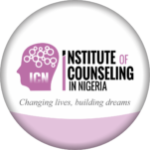A dysfunctional family is one that has at its core destructive and harmful parenting and a lack of concern for the child. The harmful effects on the child may go completely unacknowledged or be minimized. Often, little or nothing is done to rectify the situation or to alleviate its adverse effects upon the child. If the distress caused to the child is severe and long-lasting, he/she may develop a psychiatric condition such as post-traumatic stress disorder (PTSD) which, if not properly treated, may seriously and adversely affect the rest of his/her life.
A dysfunctional family is one whose interrelationships serve to detract from, rather than promote, the emotional and physical health and well-being of its members.
Although this term is used casually in popular culture, health care professionals define a dysfunctional family as one where the relationships among family members are not conducive to emotional and physical health. Sexual or physical abuse, alcohol and drug addictions, delinquency and behavioral problems, eating disorders, and extreme aggression are some conditions commonly associated with dysfunctional family relationships.
The concept of the dysfunctional family is based on a systems approach to mental health diagnosis and treatment, where the individual’s symptoms are seen in the context of relationships with other individuals and groups, rather than as problems unique to the client. There is no strict definition of a “dysfunctional family,” and especially in popular usage, the term tends to be a catchall for many different relational disorders that take place within the family system and its subsystems (parents, children). Mental health care providers and institutions increasingly recognize family and couples therapy as effective methods of treating diverse mental health disorders, especially where children are involved.
Characteristics of dysfunctional family systems
It can be argued that to some extent, all families are dysfunctional. All families tend to argue, disagree, and run into some degree of conflict from time to time. In fact, the occasional family dispute is not only normal and expected – but healthy. The idyllic, clash-free family (such as the one that was so commonly portrayed in 1950s sitcoms), simply does not exist. Teenagers are innately rebellious, parents can be overbearing and unsympathetic from time to time, and we all, as individuals, grapple with our own issues on occasion. Yet while all families are arguably dysfunctional to some degree, most familial problems will resolve on their own over time, or be resolved through effective communication and the employment of healthy coping mechanisms. The overall quality of these vital interpersonal relationships will survive small skirmishes and the inevitable intermittent personality clash.
In some cases, however, family dysfunction can leave result in lasting negative consequences, and issues can persist through the generations unless they are adequately addressed and treated. Below are some common characteristics of dysfunctional families. A family with one of these characteristics does not automatically qualify as severely dysfunctional, of course – true dysfunction will depend on the severity of the problem and the way in which it affects or instigates other potential problems.
- Addiction
One of the most common characteristics of a dysfunctional family is addiction, which will affect one or more of its members. In some cases, this addiction does not directly involve drugs or alcohol – however, it will often always make it difficult for the family to communicate, and will put a huge strain on interpersonal relationships. While addiction most typically affects the adults in the households, teenagers and young adults may also be afflicted with various forms of addiction.
Perhaps the husband in a household struggles with sex addiction, which manifests itself in a propensity towards picking up and sleeping with prostitutes. His wife works late nights as a nurse, and he uses this time to engage in his sexual compulsion. The wife remains unaware, and they eventually have a child together. The husband (now father) tries to control and repress his urges, but finds that he cannot, and begins to bring the child with him on his late-night romps. His addiction will inevitably have a major impact on his family as a whole – emotionally, psychologically, and financially.
- Fear and Unpredictability
In many cases, unpredictability will instigate a sense of fear. This unpredictability may be caused by a mental disorder in one or more family members, a constant state of financial instability, or the way one member of the family reacts to novel or challenging situations or circumstances. This role is typically played by an adult.
For example, the mother in a household may have long-since grappled with severe anger issues and may be extremely emotionally volatile. When something sets her off, she may react in a physically abusive way. Her sporadic bursts of violent outrage may lead the children in the household to feel afraid and unsafe. Her husband may be too afraid to address the issue for fear of setting her off. The fear and unpredictability that surround this situation lead to an immense amount of familial dysfunction.
- Control
Control is another hallmark characteristic of a dysfunctional family unit. In most cases, one member of the family (usually the head of the household) will exert his or her control over the rest of the family members. In some cases, the control will be exerted specifically over the spouse or the children. The result of this dysfunction is known as ‘stunting’, and often results in making the other individuals in the household feel as if they are not entitled to their own opinions – or autonomous lives. Control is either exerted in an overt way, or through passive-aggressive manipulation.
to stop going because she wanted to stop going, but because she was hoping to avoid conflict and the feelings of guilt that arose when she did go.
4. Perfectionism
This may not seem like the characteristic of a dysfunctional family, but it certainly is one – and a very common one, at that. Within perfectionist families, there is often a heavy emphasis placed on meeting unrealistic expectations. When expectations are not met, feelings of inadequacy tend to arise. Perfectionism may be displayed by one or more family members. Perfectionist households tend to produce children with low self-esteem, which may be self-perpetuating. This is a common pattern seeing as perfectionism tends to occur in parents and be directed towards their offspring.
A father and mother may expect their son and daughter to get straight A’s in school, commit to at least two extracurricular activities, and volunteer their time to a local charity every week. The daughter fulfills these expectations, though she develops an eating disorder, feeling out of control of her own life. The son feels completely overwhelmed by expectations and rebels against his parents and drops out of hockey. His parents say things to him like, “You should be more like your sister,” and, “Your sister can do it all, why can’t you?” He is eventually shamed and pressured into rejoining the team.
5. Lack of Diversity
When speaking about family functioning, diversity mainly refers to a healthy difference in interests, hobbies, and beliefs between all family members. If all members of a household strictly hold the same beliefs and engage in the same activities, it is likely that one member of the family is exerting control over the others.
For instance, there may be three children in a household in which the father is a highly respected and renowned pediatrician. The three children may all strive to be pediatricians as well, feeling obligated to follow in their father’s footsteps and dedicating years of their lives to their studies. They may even all attend the same university their father graduated from. It is likely that the father in this scenario influenced his children in some way; manipulated them into believing they would only make him proud if they followed in his footsteps.
6. Abuse
Abuse, either emotional or physical, is a predominant characteristic of dysfunctional families. Abuse will typically occur from one spouse to the other or from a parent to a child. In some cases, however, children will abuse one another. The ways in which abuse affects a family are relatively obvious. The abused family member or members will be diminished through repeated punishment. Anger, hostility, and resentment will arise, along with fear and a persistent sense of instability.
The head of a household may physically abuse his son, hitting him occasionally when he has had too much to drink. His son will begin to feel unsafe and will adopt violence as a normal and expected part of life. The son may get in trouble at school for picking fights with his classmates. Rather than teaching his son that violence is never the answer, the father abuses his son further to get in trouble at school. A vicious cycle of dysfunction is set into motion.
- Conflict
There is bound to be some degree of conflict within every household. However, the constant presence of heated conflict is abnormal, and a good indicator of familial dysfunction. If lasting and violent arguments erupt over seemingly small issues on a regular basis, there is a good chance that there is a high level of dysfunction occurring within the family unit. Conflict might also occur in a passive-aggressive way, increasing resentment and tension amongst family members.
For example, one family may spend all of its time arguing – fighting over what to have for dinner, which movie to see, where to go on vacation, etc. The members of this family may break out into screaming matches on a regular basis. Even if this family never fights in public, they are in a constant state of disagreement.
8. Poor Communication
In a dysfunctional family, communication may be ineffective, strained, or entirely nonexistent. It may be difficult for some family members to communicate their personal requirements to other members of the family, which can hinder self-expression and lead to misunderstanding and resentment. In most instances, poor communication will occur throughout the entire family unit.
Ineffective methods of communication are typically passed down through the generations.
For example, it may be common in one family to keep feelings and emotional upsets private – to always put on a brave face in public, and never express what one is truly going through. Children who grow up in an emotionally anesthetized environment will often not know how to adequately process or express their emotions and will pass this lack of communication onto their own children (and so on and so forth).
Other noticeable characteristics include:
Blaming; failure to take responsibility for personal actions and feelings; and invalidation of other family members’ feelings.Boundaries between family members that are either too loose or too rigid. For example, the parent may depend excessively on the child for emotional support (loose boundaries) or prevent the child from developing autonomy by making all the decisions for the child (rigid boundaries).
Boundaries between the family as a whole and the outside world may also be too loose or too rigid.
A tendency for family members to enact set roles- caregiver, hero, scapegoat, saint, bad girl or boy, little prince or princess-that serve to restrict feelings, experience, and self-expression.
A tendency to have an “identified patient”-one family member who is recognized as mentally unhealthy, who may or may not be in treatment, but whose symptoms are a sign of the inner family conflict. Often the identified patient’s problems function to disguise the larger family issues. For example, a child may be regarded as a bully and a troublemaker in school and labeled a “problem child,” when he may, in fact, be expressing conflicts and problems, such as abuse from home, by acting out and being “bad.”
Family therapists, like other therapists, take many different treatment approaches- psychodynamic, behavioral, cognitive, or a combination of these therapies. They may talk to members individually, together, and in subgroups. They may ask family members to reenact situations, or to do “homework” by modifying elements of their behavior and responses. As with individual therapy, one of the goals of family counseling is to reframe problems so that family members can see specific events and behaviors more clearly from a broader systems perspective.
NEED TO BOOK AN APPOINTMENT WITH A THERAPIST? CLICK HERE OR HERE


